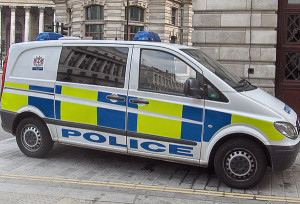
by Editor | Jun 1, 2016 | Motoring, road safety
Emergency Vehicles and How to Respond to Them
 This week, we’re looking at how you can help an emergency vehicle reach the scene of an urgent situation quickly and safely. Here’s IAM RoadSmart’s head of driving and riding Richard Gladman, to guide you through.
This week, we’re looking at how you can help an emergency vehicle reach the scene of an urgent situation quickly and safely. Here’s IAM RoadSmart’s head of driving and riding Richard Gladman, to guide you through.
- Whenever you hear the sound of an emergency siren mute your music so you can work out where the noise is coming from. Be prepared to plan your next manoeuvre if the emergency vehicle requires your help to get past.
- Be sure to pull over and stop where it is safe to do so, giving the emergency vehicle a wide enough berth. Make your intentions clear and certainly avoid blocking any major junctions or stopping in the middle of the road, on the brow of a hill or before a bend.
- Avoid stopping on kerbs, pavements and verges as they may mask hazards, damage your vehicle or put pedestrians at risk.
- The vehicle trying to pass may be a plain looking car with emergency warning equipment such as lights fitted to it – be prepared to assist in the same way.
- Going through a red light or using a bus lane to make way for an emergency vehicle is in fact breaking the law and cameras have no discretion. Avoid this at all costs and be sure to stop only where it is legal and safe to do so.
Richard said: “Emergency lights are not always easily visible and the sirens can be heard from different directions so be as vigilant as possible. Motorcycles are also used by all emergency services and they may be hard to see – be prepared to respond and plan your route before acting.
“To find out more about our advanced driving and riding courses take a look here: https://www.iamroadsmart.com/courses.”
by Editor | Oct 11, 2015 | Motoring
Driver error cited in 117,000+ road accident casualties,
IAM calls for drivers to take responsibility.
Analysis by the Institute of Advanced Motorists (IAM) has found that human
factors continue to significantly outweigh other reasons for crashes on British
roads, and have called again for drivers to look on improving driving skills as
part of their lifelong personal development.
The figures from the Department
of Transport show that in 2014 driver/rider error or reaction were cited as
contributory factors in 74% of accidents, involving more than 117,000
casualties. Some 20,830 of these were in London alone.
Police can cite up to
six factors for the cause of each accident they report.
The second highest
factor was ‘behaviour or inexperience’ which was cited as a contributory factor
in 26% of accidents, accounting for more than 40,000 casualties. In London the
number was 9,508.
The main contributory factors were (reference
1):
Contributory factor reported in accident/Number of casualties/Percentage
of accidents cited in
Driver-rider error or reaction/117,524/74%
Behaviour
or inexperience/40,778/26%
Injudicious action/39,354/25%
Impairment or
distraction/21,916/14%
Road environment contributed/20,253/13%
Vehicle
defects/3,230/2%
Neil Greig, IAM director of policy and research, said:
“People often blame their car, the road, or the other driver for the accidents
and near misses that they have. These figures show that in the vast majority of
cases, it’s the driver or rider themselves who is to blame.
“Changing
attitudes is the key factor when it comes to reducing the numbers of casualties
on our roads. People must accept responsibility for enhancing their own skills
and recognising their limitations. The first step towards that is to think
about advanced training and the right now you can get a free IAM taster session
at
www.iam.org.uk/lovedriving
He added: “It is not enough to leave people
to their own devices once they have passed their test. Like so many other areas
of life extra coaching pays dividends – and for a driver or rider, that means
keeping their skills fresh by continuous assessment.”

 This week, we’re looking at how you can help an emergency vehicle reach the scene of an urgent situation quickly and safely. Here’s IAM RoadSmart’s head of driving and riding Richard Gladman, to guide you through.
This week, we’re looking at how you can help an emergency vehicle reach the scene of an urgent situation quickly and safely. Here’s IAM RoadSmart’s head of driving and riding Richard Gladman, to guide you through.